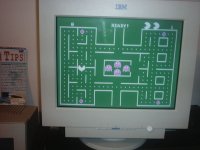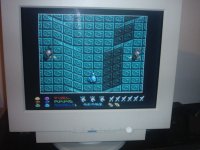Hello everyone,
I've been looking for CGA and EGA monitors locally to no avail. However I have found some EGA/CGA to VGA converters cheap online. A few people in the classic arcade forums either love them or loath them saying they're great and useful or terrible with lag. All the ones i've seen appear to be the same unit, same blue board, same heatsink locations, same connectors in the same places, so i'm 90% sure there's just the one type.
I'm hoping to kill two birds with one stone with it, as I can then use my EGA IBM PC and CGA Amstrad PPC512/640. I don't plan on using them for high speed games, so a little lag is tolerable.
Has anyone on here used them or can offer any guidance on them?
I've been looking for CGA and EGA monitors locally to no avail. However I have found some EGA/CGA to VGA converters cheap online. A few people in the classic arcade forums either love them or loath them saying they're great and useful or terrible with lag. All the ones i've seen appear to be the same unit, same blue board, same heatsink locations, same connectors in the same places, so i'm 90% sure there's just the one type.
I'm hoping to kill two birds with one stone with it, as I can then use my EGA IBM PC and CGA Amstrad PPC512/640. I don't plan on using them for high speed games, so a little lag is tolerable.
Has anyone on here used them or can offer any guidance on them?


